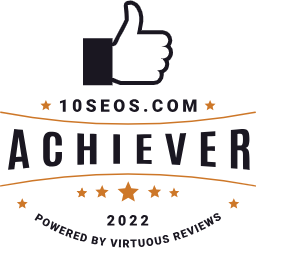If you think images only play the aesthetic part on your website, you are wrong. Visuals can and should be used as part of the on-page strategy to optimize your website for SEO. And a great image optimization approach starts with developing the alt texts for your website’s images.
What is Alt Text?
As the name suggests, alt text is the alternative text that we use in a website’s HTML code to describe the content of the images on a page. Also known as “alt description” or, more famously, “alt tag,” this textual content does not appear on the website itself as it resides in the backend – HTML code.
The only time they do appear on a website is when the search engine fails to render an image. The alt text then appears in place of the image to give the user an idea of what the image was about. Alt text is also used to help disabled or visually impaired people who use screen readers to surf the web.
Here’s an example of what the alt text for the following image should look like:

<img src=”kid-playing-football.jpeg” alt=”kid playing football on the beach” />.
So, what makes alt text so important to a website’s SEO strategy?
The simplest answer would be that it helps search engines comprehend the attributes of an image and, consequently, help build better SEO rankings by offering relevance to the web page.
How Can You Optimize Alt Text for Images on Your Website?
Whether you choose to use images from stock image websites or original, custom ones, writing excellent alt texts does not have to be a difficult job if you know what you need to do. All you have to do is creatively describe the features of your visuals.
Let’s have a look at some simple tips that you can keep in mind while writing alt texts for images:
Be descriptive:
When writing alt text for an image, be sure to explain each detail of the image in a descriptive manner. Consider how you will tell a blindfolded person about the image in one sentence? That is your alt text. The details will help the search engines with the ranking and give context to your pages.
… But also remain concise:
While it is essential to be as elaborate as possible, don’t overdo the description. Unnecessary details in the alt text and too long sentences can turn off the people taking aid from screen readers.
No keyword stuffing:
You may be thinking that alt texts could be the place where you can stuff lots of keywords and in turn help boost your SEO rankings. Well, sorry to burst your bubble, but doing so may give you an edge initially, but it will damage your rankings in the long run. When the search engine crawlers find out you tricked them through keyword turkey, they may penalize you for the betrayal, impacting your credibility big time.
Be creative:
Instead of using the same target keyword and adjusting it in the alt text for every picture, it is a great practice to come up with new and unique phrases to match your brand niche. Remember, the aim is to write a relevant alt text. Using the primary keyword for each picture will not do justice to the various media. Doing so, you may risk losing your page’s relevance in search engine results.
Don’t describe it as an image:
While search engines might need your help to understand the content of an image, they still are smart enough to understand that it is a picture. Don’t add words like “Image of…” or “Photo of…” to your alt text. The algorithms know they are processing a photo.
Keeping the above tips in mind, let’s have a look at a good alt text example for the following image:

<img src=“girl-wearing-red-and-white-top.jpeg” alt=”female model with spectacles wearing a red and white one-shoulder top”
The above alt text has just the right amount of description and is still not too long. It explains the image pretty well and does not involve any kind of repetition. Above all, it is enough for the search engine and the screen readers to grasp the contents of the image.
Pro Tip: It is pretty common to overlook form buttons on the website and not write alt text for them. These buttons might have text within the image itself, like the “Submit” button or the “Search” tab, etc. If you forget to assign alt text to form buttons, the text reader will pass over them as it cannot read image content by itself. It means you will lose the opportunity to engage a few users on your website.
Takeaway
Alt-text is not just text you write to get a better SEO ranking; it also ensures that all the users can fully interact with your website even when the conditions are not perfect. For example, when the search engine might not be able to load the image, or the user might be visually impaired. You cannot risk losing prospects because of less-than-ideal conditions.
Don’t undervalue the benefits of great alt texts and optimize them using the above strategy to take your online game to another level!




